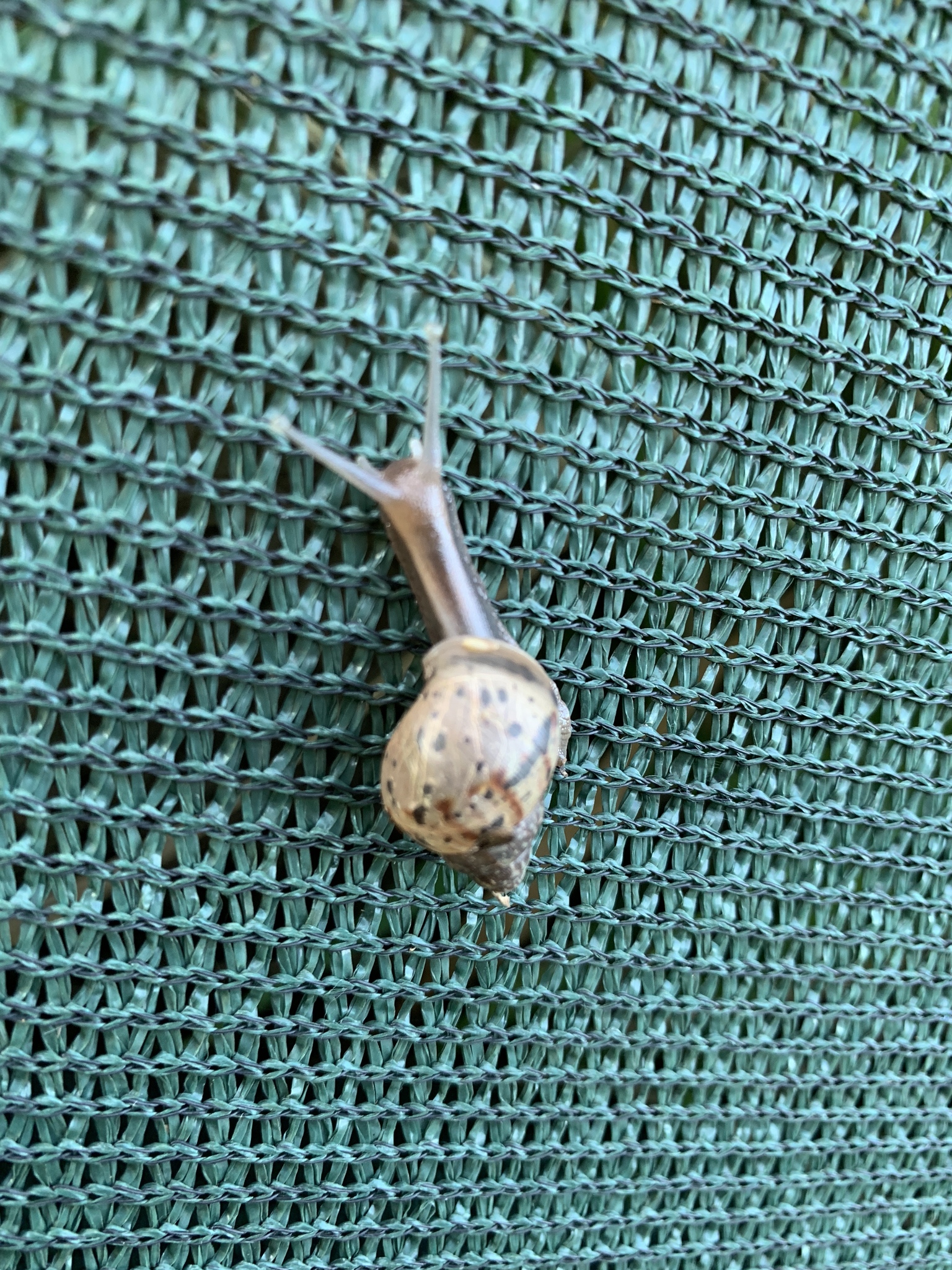by Piter Kehoma Boll
A few days ago I saw a photo of some giant African snails and though “that’s an interesting species to feature as a Friday Fellow”, and to my surprise a gastropod was scheduled to be presented today, so voilà, let’s talk about Lissachatina fulica, the Giant African Snail.
As the popular name implies, this land snail is native from Africa, more precisely East Africa, around Kenya and Tanzania, and it is quite large, with adults measuring 20 cm or more in length and about 7 cm in height. The shell is conical and very hard and has a marmorated brown and white color and a sharp border around its opening.

The Giant African Snail is able to feed on a huge variety of plants and can sometimes even consume dead animals, paper and even stones. As a result, it is very adaptable to new areas and has become invasive in many regions of the world, especially tropical areas in Asia, South America and the Pacific.
These snails are hermaphrodites but when mating they can act only as male, only as female or as both and this is usually related to the size of both snails. If they are similar in size, they transfer sperm to each other. If they have different sizes, the smaller snail act as a male and the larger one as a female. A “female-acting” snail can store sperm up to two years to fertilize eggs as they are produced. Thus, a single mated “female” can create an entire population if transported to a new area as it can lay around 200 eggs per clutch and produce about five to six clutches per year.

The Giant African Snail is edible and used as a food source by some African peoples. A similar species, Archachatina marginata, native from Nigeria, is offered to West African deities which in Brazil led to the development of Candomblé. However, as this species is not found in Brazil, it is replaced by Lissachatina fulica, which has been introduced in this country. Recently it has become considerably popular as a pet as well. This species has also been studied for medical use and an antimicrobial compound has been isolated from its mucus.
Especially due to its use as a food source, but also accidentally, the Giant African Snail has ben introduced in many places around the world and has become a threat to tropical ecosystems because of its voracious behavior, where it competes with native snails for food resources. Due to the need to feed on calcium to build their shell, these snails can also end up eating calcium-rich material in buildings and cause severe damage to the structures.

More than that, the Giant African Snail can harbor a parasitic nematode, Angiostrongylus cantonensis, which causes a very serious meningitis in humans. Most cases of humans being infected by this nematode is the result of eating the snails raw, but there is a small chance of getting infected even by only manipulating the snails.
Due to so many damaging outcomes from the introduction of this species around the planet, it is considered one of the top 100 invasive species of the world. Some attempts to control invasive populations using biological agents have failed miserably and only worsened the whole scenario. Next week I will present one of those failures.
– – –
– – –
References:
Graeff-Teixeira, C. (2007). Expansion of Achatina fulica in Brazil and potential increased risk for angiostrongyliasis. Transactions of the Royal Society of Tropical Medicine and Hygiene, 101(8), 743-744. https://doi.org/10.1016/j.trstmh.2007.03.012
Thiengo, S. C., Faraco, F. A., Salgado, N. C., Cowie, R. H., & Fernandez, M. A. (2007). Rapid spread of an invasive snail in South America: the giant African snail, Achatina fulica, in Brasil. Biological Invasions, 9(6), 693-702.
Wikipedia. Achatina fulica. Available at < https://en.wikipedia.org/wiki/Achatina_fulica >. Access on 24 February 2021.
Zhong, J., Wang, W., Yang, X., Yan, X., & Liu, R. (2013). A novel cysteine-rich antimicrobial peptide from the mucus of the snail of Achatina fulica. Peptides, 39, 1-5. https://doi.org/10.1016/j.peptides.2012.09.001
– – –
* This work is licensed under a Creative Commons Attribution-NonCommercial-ShareAlike 4.0 International License.
This work is licensed under a Creative Commons Attribution-NonCommercial-ShareAlike 4.0 International License.
** This work is licensed under a Creative Commons Attribution 4.0 International License.
This work is licensed under a Creative Commons Attribution 4.0 International License.
